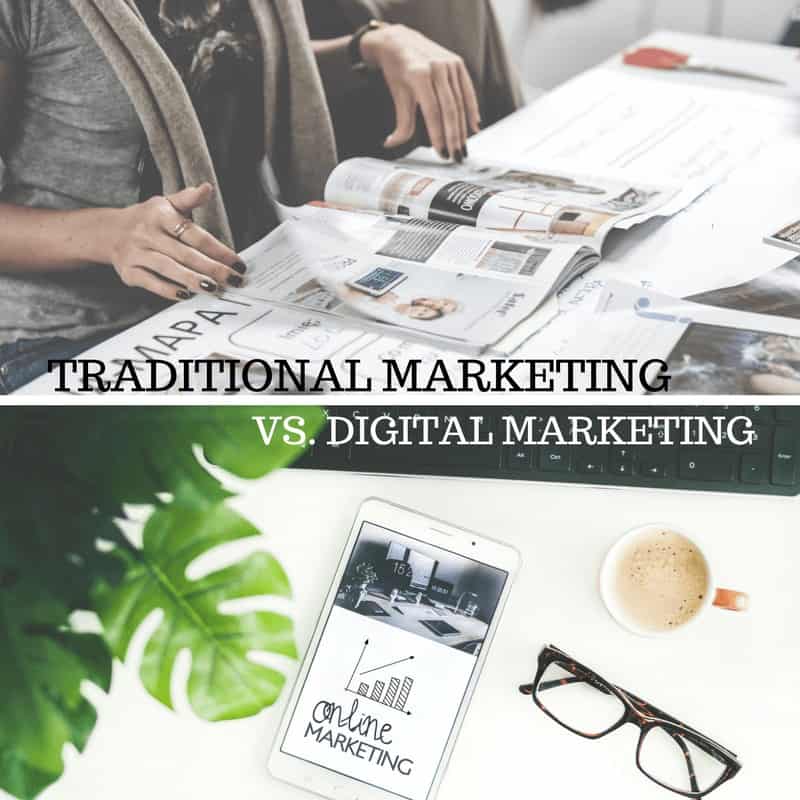What is "traditional marketing?"
Traditional marketing can be thought of as an "outbound" strategy for reaching potential leads to develop and maintain clients for a business. This method relies heavily on print advertising, direct mail marketing, broadcast advertising, telephone marketing, cold calling, and referral-based calling.
Print advertising can include advertising in magazines, newspapers, and trade publications that are distributed to the public through print media, while direct mail marketing is the distribution of print materials such as brochures, postcards, catalogs, and letters through the mail.
- Pros: While many consumers rely on digital outlets for information, print advertising can be perceived as a more trusted and reliable source. Print campaigns can also hit the target market with more accuracy without bombarding the reader with distracting materials.
- Cons: There are downsides to this type of advertising. Advertisements rely on exposure to the materials and readership numbers, which due to the rise of technology and digital media, readership numbers are on the decline for many print media sources. The timeliness and scheduling factors can also be a challenge. Lastly, you cannot accurately track the effectiveness of the campaign.
Broadcast marketing is the use of radio and television ads to reach potential clients.
- Pros: These tools are used to reach the masses, and benefits can include a huge audience potential and the fact that the information can be distributed through auditory means (radio) and a combination of audio and visual means (television).
- Cons: This form of advertising can be very costly due to the cost of production and distribution of the intended message. It is also difficult to identify the targeted market and to keep up the evolving habits of radio and television viewership. Many consumers opt for advertisement-free music and television services which means they are not exposed to the intended message.
The cold call is a technique whereby a salesperson reaches out to individuals who have not expressed an interest in the products and services a company offers, either though unscheduled visits or telephone.
- Pros: This method allows the sales team to establish a direct contact and receive immediate feedback, thereby allowing representatives to improve solutions and sales processes.
- Cons: Cold calling can also be challenging for several reasons. It is difficult to contact the actual decision maker with the right contact information. Many potential clients are irritated or even hostile to sales representatives who contact or visit them without an invitation, some of which are registered on do-not-call lists.
What is "digital marketing?"
Digital marketing can be thought of as an "inbound" strategy for reaching potential leads to develop and maintain clients for a business. This method relies on digital technology to distribute information to target audiences that will attract new prospects, convert new prospects into leads, and close new customers. This strategy relies on all things internet from websites, blogs, and articles, to email and social media. Key components of digital marketing include SEO (Search Engine Optimization), SEM (Search Engine Marketing), and SM (Search Marketing).
Search Engine Optimization: SEO refers to the process of increasing website traffic through free search results on search engines such as Google, Yahoo, or Bing. These free results are also referred to as organic searches, natural searches, and editorial searches. The focus is on utilizing quality content and keyword alignment to generate traffic on a webpage. The more relevant the keyword and content, the higher quality the traffic that finds your site.
Search Engine Marketing: SEM refers to the process of increasing website traffic through the use of paid advertising such as paid search ads, paid search advertising, and pay-per-click advertising on the same search engines. The focus is on contextual advertisements and the advertisers are billed according to traffic on sponsored links.
People are seeking information everywhere they go - on smartphones, tablets, computers, and even gaming systems. The digital ad follows potential clients around the world at all times. With the proper software and know-how, the digital ad can be targeted, tailored, tracked, and modified almost instantly and is central to search marketing.
Search Marketing: SM is the strategy of advertising on social media platforms such as Facebook, Twitter, LinkedIn, or Instagram which should be utilized with any digital marketing plan. Social interaction is what social media offers. Businesses can get direct feedback on their buyer personas, customer service options, public perceptions of products and services, and even the quality of the information being distributed. It is important to be able to monitor traffic, generate leads, and build community in order to build and maintain a client base, and social media allows this to happen with the click of a button.
Overall Pros and Cons:
- Pros: The key to digital marketing is to offer reliable, concise information to consumers within the target audience that is industry relevant. Digital marketing allows companies to focus in on actual prospects and directly measure the effectiveness of their marketing campaign rather than cast the wide net approach used with traditional marketing.
- Cons: The challenge is making sure your digital marketing team understands the philosophy, tools, and content to effectively run the campaign.
Is traditional marketing or digital marketing better?
A marketing plan will likely contain some components of traditional marketing, but any quality marketing plan will be driven by digital marketing. The experts at Neon Rain are available to support you in establishing the foundation for a quality digital marketing plan by developing and designing a website, web application or mobile app for your company
